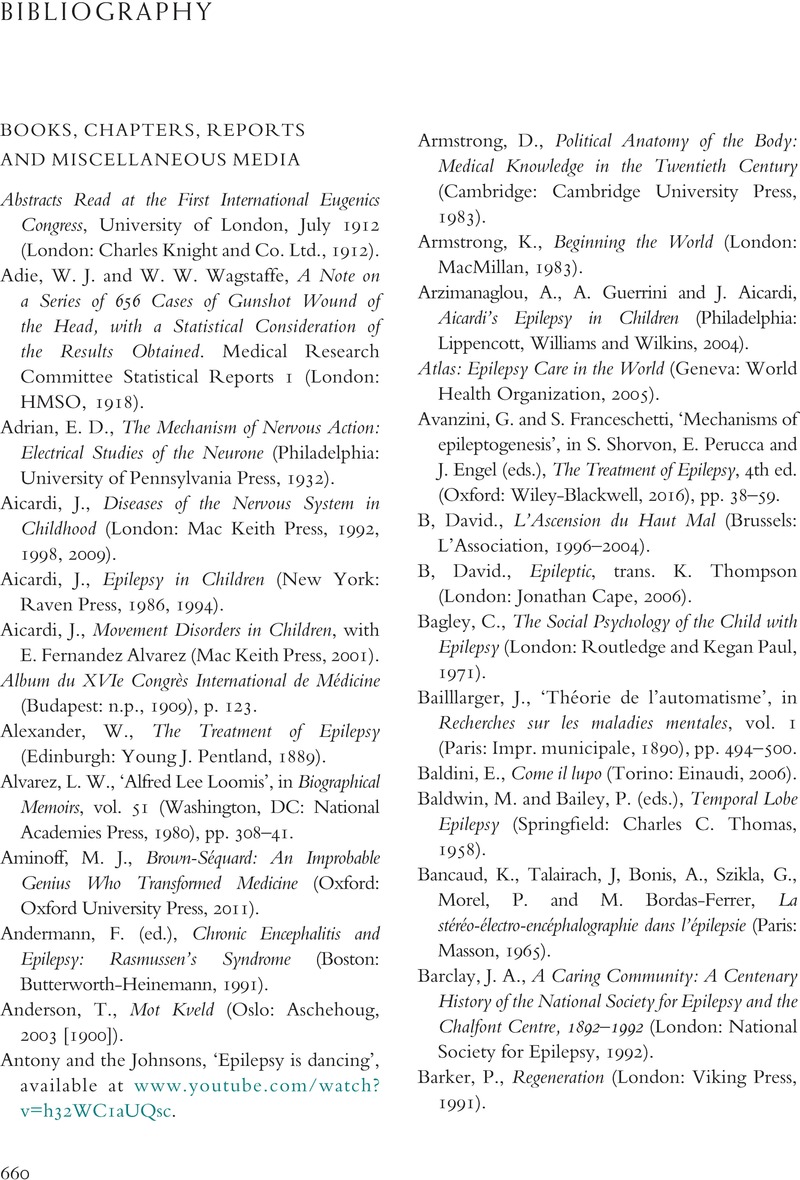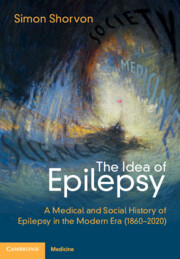Book contents
- The Idea of Epilepsy
- The Idea of Epilepsy
- Copyright page
- Dedication
- Contents
- Preface
- Section 1 The Voyage Of The Good Ship Epilepsy
- Section 2 ‘A Plague upon Your Epileptic Visage’
- Section 3 Epilepsy: The Paradigm of the Suffering of Both Body and Soul in Disease
- Book part
- Glossary
- Bibliography
- Index of Names
- Index
- References
Bibliography
Published online by Cambridge University Press: 13 January 2023
- The Idea of Epilepsy
- The Idea of Epilepsy
- Copyright page
- Dedication
- Contents
- Preface
- Section 1 The Voyage Of The Good Ship Epilepsy
- Section 2 ‘A Plague upon Your Epileptic Visage’
- Section 3 Epilepsy: The Paradigm of the Suffering of Both Body and Soul in Disease
- Book part
- Glossary
- Bibliography
- Index of Names
- Index
- References
Summary

- Type
- Chapter
- Information
- The Idea of EpilepsyA Medical and Social History of Epilepsy in the Modern Era (1860–2020), pp. 660 - 704Publisher: Cambridge University PressPrint publication year: 2023



